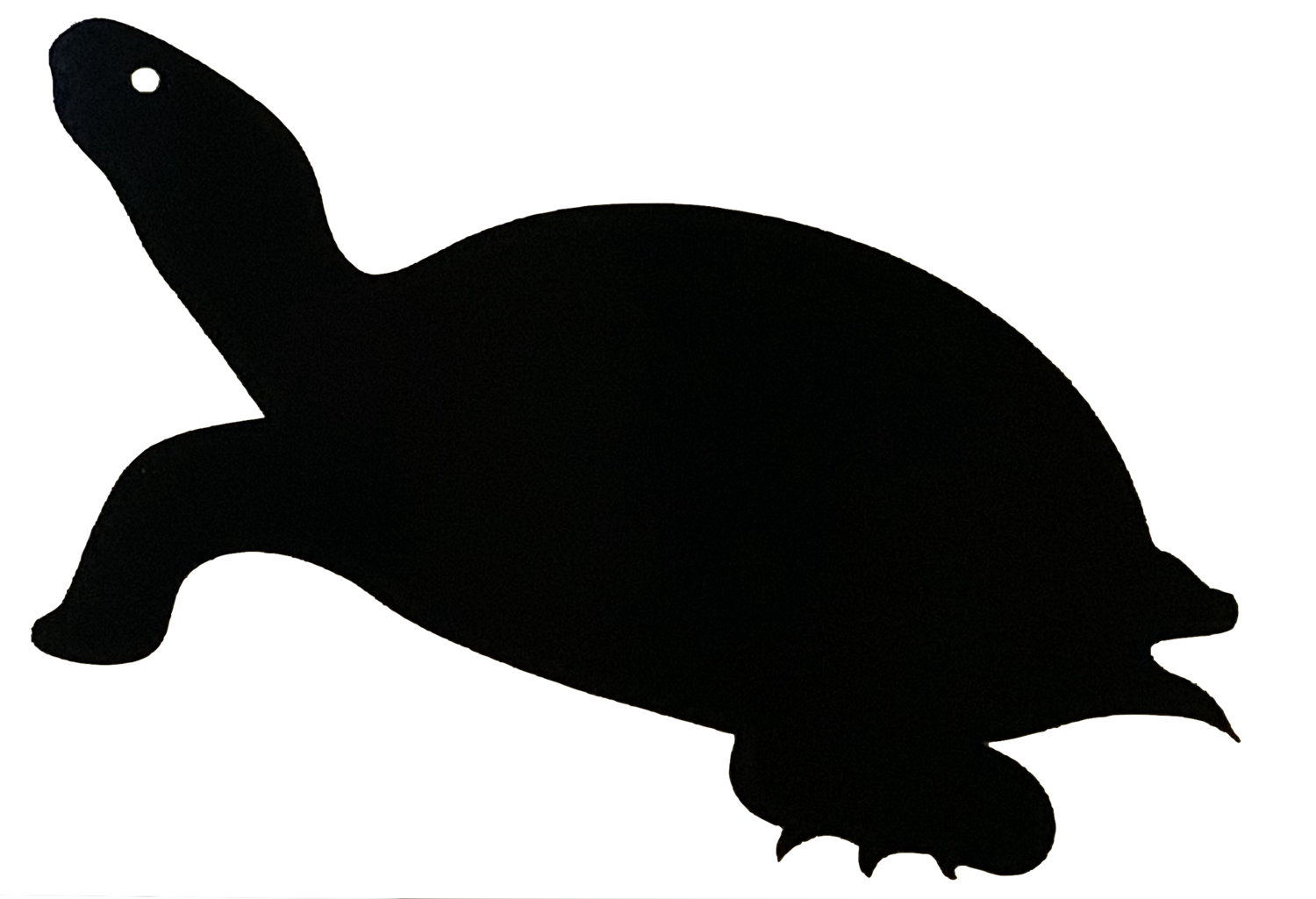Alternative turtle nesting sites
Where a mother turtle decides to lay her nest is an important factor impacting the success and survival of her hatchlings. We know that our local Ontario turtles prefer sandy substrate with minimal vegetation and direct sunlight, thus, when providing alternative nesting mounds we must try to recreate this nesting habitat.
Northern map turtle nesting in dense grass, an unusual spot that may have been selected due to human influence in the nesting habitat.
Alternative nesting mounds are created as a mitigation measure to reduce our human impact on turtles. They are typically used when access to historical nesting sites is limited or eliminated for some reason (e.g. exclusion fencing along a road or new developments that block access to nesting sites).
The Canadian Wildlife Federation has recommendations for how to construct alternative turtle nesting mounds. These guidelines suggest leaving the sand and gravel substrate un-compacted. Of course, every situation is different and in some locations in Kingston we’ve found that when the substrate is not compacted it allows predators to more easily access and dig up turtle nests, even when a protective nesting box is placed over the nest. As a result, several new, temporary alternative nesting mounds installed in 2024 we compacted. These compacted nesting sites were used by the local northern map turtle known to regularly nest in that area (our downtown Kingston monitoring site). As it is still early, we do not know how successful these mounds will be.
High concentration of turtle nests in our downtown Kingston monitoring site are commonly found in gravel areas such as this disturbed gravel pile.
Alternative nesting mounds beside a busy road after exclusion fencing was installed to reduce turtle road mortality
When it comes to maintenance of alternative nesting mounds there are many questions and the answer is not straight forward. Part of the reason it’s not straight forward is because research on best management practices has not been well studied and every site is unique. We know these nesting mounds must have limited vegetation growth but how much is too much? Do you have to hand pull all the weeds? Can you just use a whipper snipper to cut back the height? Do you have to dig up / rototill the substrate to ensure thick root mats do not develop?
Like we said, there are lots of questions.
One study by Kolbe and Janzen 2002 looked at nesting site selection in snapping turtles from northwestern Illinois and found that nest success was higher in locations with less vegetation, more open areas, and with sandy substrate compared to nests laid in grassy locations. Not only was nest success higher but the density of snapping turtle nests in these locations was higher showing a preference by mother turtles.
This would suggest that maintenance and reduction of vegetation on alternative nesting mounds is key for increasing hatchling survival. However, some vegetation may still be important to provide shelter to nesting females as found by Buhlmann and Osborn 2011, who planted native grasses to provide concealing structures for female wood turtles as well as to help reduce erosion by rainfall. Although this study planted some grasses, they still hand weeded their nesting mounds prior to each nesting season.
Two northern map turtles actively nesting on a compacted temporary alternative nesting mound installed earlier that year to mitigate reduced access turtles would have to preferred nesting sites due to construction (fencing).
It’s interesting to note that, Kolbe and Janzen 2002 found that in human occupied locations the preference for sandy sites was less distinct partially due to ecological traps* that push turtles into nesting in non-ideal locations.
*An ecological trap is a situation where organisms are lured into poor-quality habitats due to environmental cues that are no longer reliable.
This fact helps us understand that our observations of northern map turtles regularly nesting in mowed grassy areas (see image above) may actually be an ecological trap and not the best site selection for the survival of their hatchlings.
Alternative nesting mounds can be a successful and important part of helping protect our at risk turtle species as they may successfully boost turtle hatchling success rates where humans have impacted turtle habitats and other human activities have reduced adult populations. Alternative nesting mound success was shown in the study by Buhlmann and Osborn 2011, who found that 17 of the 18 nests laid in their alternative nesting mounds produced hatchlings with 76% success rate for egg survival. As communities continue to install alternative nesting mounds and collect data we can better understand how these mitigation methods are helping our turtle populations and what the best design and maintenance methods would be.
References
Buhlmann, K.A. and Osborn, C.P. 2011. Use of an artifical nesting mound by wood turtles (glyptemys insculpta): A tool for turtle conservation. Northereastern Naturalist.
Kolbe, J.J. and Janzen, F.J.. 2002. Impact of nest-site selection on nest success and nest temperature in natural and disturbed habitats. Ecology. 81:1. p269-281.




